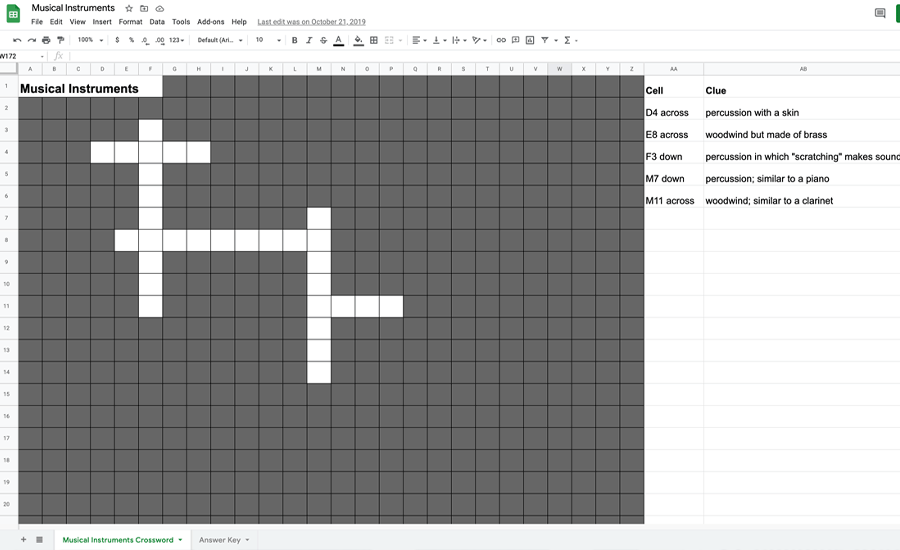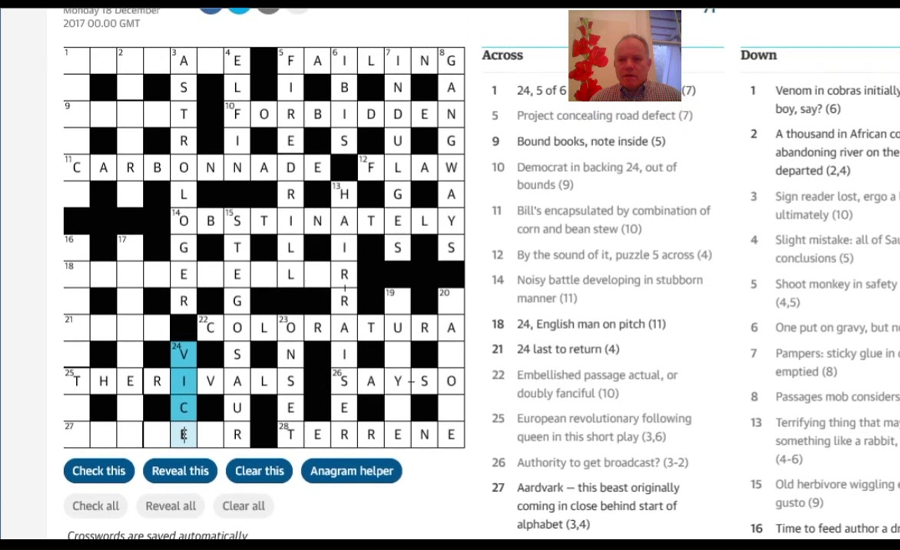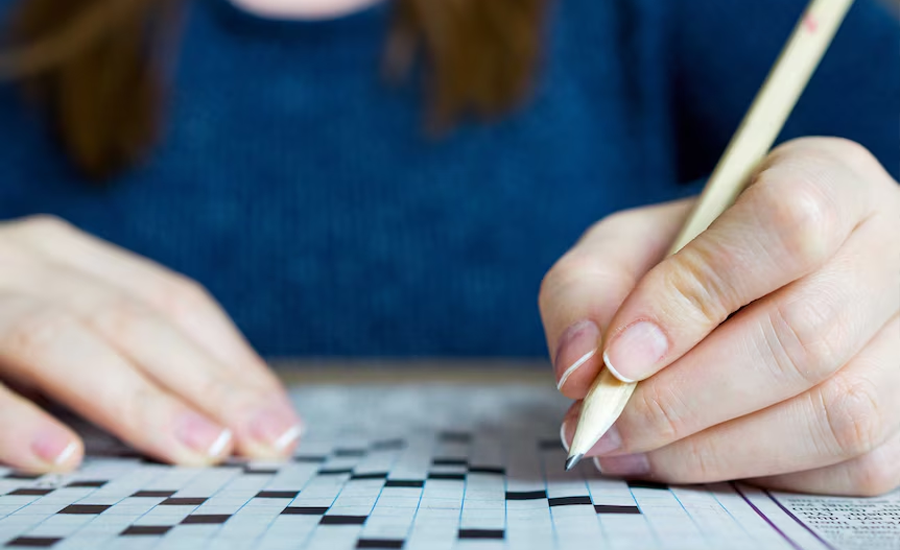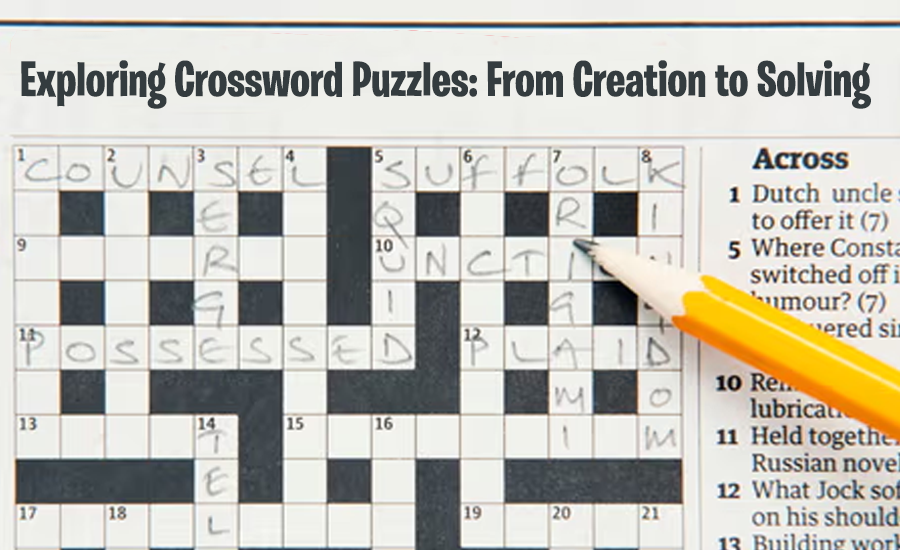Crossword puzzles have been a favorite pastime for generations. They engage fans with wordplay, trivia, and logic. The New York Times crossword is famous for its tricky and clever clues. It’s also going to offer insights into common crossword clues and tips for solving them.
What is a crossword puzzle?
A crossword puzzle is a word game where players fill in words based on clues provided. The answers intersect on a grid. Each square in the grid is part of a word running across and a word running down. Crosswords vary in difficulty and style. Cryptic ones add complexity with wordplay and obscure clues.
What or which is a crossword clue?
Crossword puzzles are a captivating pastime. They challenge the mind and offer hours of fun. You may be a seasoned solver or new to crosswords. But understanding how to decode and create clues is key. This guide will walk you through the details of crossword clues. It will give you the tools to improve your problem-solving and clue-writing.

Creating a crossword puzzle involves several steps:
1. Theme Selection: Decide on a theme. Puzzles often have themes. Start by choosing a theme. Many crosswords, especially those in the NYT, have a central idea. This feature makes the puzzle more engaging and cohesive.
2. Grid Design: Create a grid of 15×15 or 21×21 squares for standard puzzles. Place words in the grid. Start with the longest words and theme words. Ensure that every letter is part of both an across and down word. Ensure the grid is symmetrical, as most crosswords maintain this pattern.
3. Word Placement: Begin placing your longest and theme-related words on the grid first. Ensure each letter is part of a cross and a down word.
4. Clue Writing: Write clues for each word. Depending on the desired difficulty, cues can be direct definitions, puns, or wordplay.
5. Editing: Review your puzzle for errors and ensure it’s balanced. Your task is to break apart the sentence. Then, rewrite it as two or more sentences. Each should contain one idea and be simple as well. Keep the wording flowing, check for errors, and ensure the puzzle is fair. Words should be common. They should be solvable but interesting.
Common Crossword Clues
Crossword clues span from straightforward descriptions to intricate puzzles. Here are examples of common types of clues:
1. Direct clues are straightforward definitions. For example, “A fruit” for “APPLE”. For instance, for the word “CAT,” a direct clue could be “Feline pet.”
2. Indirect clues need more thought and might involve wordplay or puns. For example, an indirect clue for the word “CAT” could be “You might see it on a hot tin roof.”
3. Answers should state this. They often do so by including an abbreviation. For example, “TV network” for ABC.
4. Tense and Plurality: Ensure the tense and plurality of the clue match the answer. For example, if the answer is “Ran”, the clue should be in the past tense, like “it’s sprinted.” Wordplay clues include puns and anagrams. For example, “Star actor’s reward” (5 letters) clues “it’s OSCAR”.
5. Cryptic clues are puzzles with wordplay and indirect meanings. They need solvers to think outside the box. If the puzzle has a theme, make sure the clues for themed answers fit it well.
Examples of Specific Crossword Clues
- When to make amends is the answer, and it’s “ATONEMENT”.
- How obvious is the clear answer?
- “It’s irate.”
- How strange is the answer, “It’s bizarre”.
- That’s a rather unusual question!
Cryptic Crosswords
Cryptic crosswords are a type of crossword. Their clues involve wordplay, such as anagrams, homophones, and double meanings. These puzzles require a different approach than standard crosswords. They often need more lateral thinking and knowledge of cryptic clue rules.
Understanding Cryptic Crosswords

A type of crossword puzzle. They’re known for their tricky clues. The clues combine wordplay, puns, and riddles. Traditional crosswords rely on simple definitions. Cryptic crosswords need solvers to make unconventional connections. They must decode many layers of meaning. This article will cover the main features of cryptic crosswords. It will explain how to solve them and give tips for beginners.
Key Features of Cryptic Crosswords
1. Cryptic crosswords differ from standard crosswords in several ways:
Cryptic clues have two parts. They have definitions and wordplay. The definition is usually at the start or end of the clue. It gives a clear hint of the answer. Wordplay is the tricky part, involving various forms of word manipulation.
2. Anagrams are clues that jumble the letters of a word or phrase to form the answer. Indicators for anagrams include words like “scrambled”, “mixed”, or “shaken”. For example: “A new diet—it’s the word ‘new’ that indicates an anagram of ‘diet’, answering ‘Tide’.”
3. Homophones: These clues use words that sound like the answer. Indicators include words like “heard”, “sound like”, or “on the radio”. The leader’s voice is serene, hinting at a similar sound. The answer is “LEAD,” which sounds like “lead”, a leader.
4. Charades involve breaking the answer into parts. The parts fit together. The first letter of France, say, is “F”, and it (for instance) answers “F”.
5. The clue itself hides the answer within it. Indicators include words like “hiding”, “within”, or “part of”. We’ve heard pirates travel over a hidden island (5). “Travel” indicates movement in the clue. The hidden word is “TARSI” within “piraTES TRavel over.”
6. These clues provide two definitions for the same word. They do not include any wordplay. For example: “Post a letter – ‘post’ and ‘letter’ both define the answer, it’s.”
Approaching Cryptic Crosswords
1. Find the definition. Start by finding the simple definition. It is usually at the start or end of the clue.
2. Look for indicators. These are clue words like “scrambled” (an anagram), and “sounds like” (a homophone), and it’s hidden. They can show the type of wordplay.
3. Break down the clue: separate it into its definition and wordplay parts. Tackle individual components first, then merge your answers.
4. Solve Cryptic Crosswords: Puzzles need unconventional problem-solving skills. Don’t take clues at face value. Consider other meanings and word tricks.
5. Frequent practice refines your skills in solving cryptic crosswords. Begin with simple puzzles, then shift to complex ones.
Tips for Beginners
1. Start with simpler cryptic crosswords. Develop problem-solving abilities through escalating complex puzzle exercises.
2. Learn Common Indicators: Familiarize yourself with common wordplay indicators and their meanings.
3. Use online resources. Many apps and sites provide hints and explanations for cryptic crossword clues.
4. Join a community. Engage in online forums and communities. There, cryptic crossword enthusiasts share tips and solve puzzles.
5. Be Patient: Cryptic crosswords can be challenging, so don’t get discouraged. With practice, you’ll improve your problem-solving skills.
Crossword Solving Tips
1. Start with the easy clues: fill in the answers you know immediately. This can help with intersecting words.
2. Look for common prefixes and suffixes. Recognizing common word parts helps with solving tougher clues.
3. Consider the theme: if the puzzle has a theme, use it to help deduce the answers.
4. Pursue creative connections: Consider wordplay and many meanings in cryptic crosswords.
5. Use a Crossword Solver. Online tools can help when you’re stuck. They give possible answers based on your letters.
Best Crossword Apps
Several apps can help you improve your crossword skills:
NYT Crossword: It offers daily puzzles and an archive of past puzzles.
Crossword Solver: Useful for finding answers when you’re stuck.
Crossword Compiler: For those interested in creating their puzzles. It offers
Common Crossword Clue Formats
Understanding common clue formats accelerates crossword puzzle solutions.
- Straightforward clues provide a direct definition or synonym of the answer. For example, “Large feline” for TIGER.
- Wordplay Clues: These involve puns, anagrams, or other forms of word manipulation. Example: “Craft that’s a homophone of a pronoun” for CANOE (can you).
How to Solve Crossword Puzzles

Solving a crossword puzzle requires varied skills. These include general knowledge, vocabulary, and problem-solving. Some tips to solve crossword puzzles are:
1. Start with the easy clues: fill in the answers you know for sure first. This will provide you with letters that can help solve more difficult clues.
2. Look for fill-in-the-blank clues: these are often easier to solve and can give you a good starting point.
3. Consider the length. The number of squares in each answer can help narrow the options.
4. Use crossword abbreviations. Abbreviate the clues. They show that the answer is also abbreviated.
5. Think about wordplay: some clues use puns or other forms of wordplay. If a clue seems too tricky, seek a simpler answer. Consider alternative meanings or phrasings.
Why is it that it’s the New York Times crossword?
Several reasons support this view. They consider the NYT crossword one of the best crosswords.
1. The New York Times crossword has high-quality puzzles. It’s got a variety of themes and difficulty levels.
2. Experienced crossword editors scrutinize each puzzle, verifying its clues’ accuracy and fairness.
3. Puzzles with cultural significance embed references that resonate with the audience.
Can crossword answers be two words?
Yes, crossword answers can be many words. The clues will often state this by phrasing them in a way that implies a phrase or compound term. For example, the answer to “It’s” common sense might be “HORSE SENSE.”
Conclusion
Cryptic crosswords are a type of puzzle. They mix wordplay, logic, and creative problem-solving. To solve them, you must understand their main features and practice often. Anyone can improve their ability to solve these puzzles. It’s a great way to have endless fun. They also offer a mental workout.
Crossword puzzles offer a wonderful blend of challenges and entertainment. You may create your puzzles. Or solve the daily NYT crossword or tackle the cryptic crossword. The key is to enjoy and learn as you go. With practice, you’ll find your skills growing. You’ll also find your enjoyment in this classic pastime growing every day.

As a versatile and creative content writer, I craft compelling narratives that captivate and engage readers. With a keen eye for detail and a passion for storytelling, I transform ideas into impactful content. Clients choose me for my ability to understand their vision, deliver high-quality work on time, and provide a unique voice that resonates with their audience.

